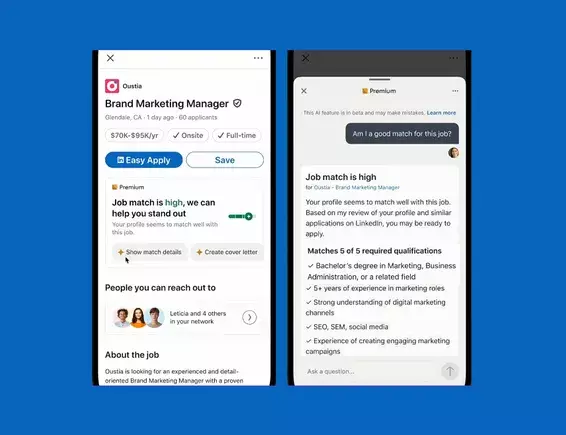In an era where technology is intricately woven into every aspect of our lives, LinkedIn has taken a significant step by integrating artificial intelligence into its recruitment process. The platform’s introduction of newly developed AI tools aims to support job seekers through its innovative “Job Match” feature and a dedicated recruitment AI agent. These tools are crafted to streamline the application process while offering targeted assistance to users, leading to more efficient job searches and improved hiring experiences.
At the forefront of LinkedIn’s advancements is the Job Match tool — an AI-driven feature designed to analyze job postings and subsequently assess how individual candidates fit the required qualifications. By cross-referencing a user’s profile with job descriptions, Job Match effectively highlights the similarities and discrepancies in skills, allowing job seekers to better understand their position in a competitive market.
Imagine applying for a job and instantly receiving feedback on your likelihood of success. Job Match provides this by delivering a concise summary that details how well a user’s profile aligns with the specifics of the job listing. More than just insights, it offers tailored suggestions, including ways to enhance resumes, recommendations for relevant skills enhancements, and advice on crafting individualized cover letters. This feature demystifies the application process, empowering candidates to target positions where they are more likely to be seen as suitable.
Furthermore, for LinkedIn Premium subscribers, the tool goes a step further, offering categorical ratings that compare their profiles against those of other applicants. This tiered analysis not only boosts confidence in the application process but also enables users to focus their efforts on roles they are statistically more likely to secure.
In addition to helping job seekers, LinkedIn’s new recruitment AI agent aims to revolutionize how small to medium-sized businesses approach hiring. By simplifying the job listing process through a user-friendly interface, this tool targets the needs of nearly 2.5 million small and medium enterprises (SMEs) currently leveraging LinkedIn for recruitment. The intuitive point-and-click functionality allows businesses to efficiently post job ads, connect with candidates, and evaluate applications.
Moreover, this AI recruitment agent offers guidance tailored to the unique challenges faced by smaller organizations. It streamlines the hiring process, helping businesses save time and resources while promoting effective practices in candidate assessment. By providing tools that make recruitment less cumbersome, LinkedIn aligns itself with the evolving demands of a dynamic job market, characterized by ever-shifting workforce needs.
The launch of these AI tools is just a part of LinkedIn’s broader vision, which focuses on ushering in what they describe as an “agentic era” of digital connection. As digital interactions continue to evolve, the increasing use of AI agents tailored to users’ specific needs signals a significant shift in how we engage with technology. LinkedIn’s developments in this space represent a commitment to fostering an environment where AI not only assists job seekers but also enhances the operational capabilities of businesses.
By leveraging insights garnered from vast data sets derived from millions of job postings and professional experiences, LinkedIn is equipping users with knowledge that would typically take months of experience to accumulate. This wealth of information opens up possibilities for job seekers and employers alike, potentially redefining recruitment norms and practices in the digital age.
As artificial intelligence continues to permeate various sectors, LinkedIn’s new AI tools serve as a testament to the platform’s dedication to enhancing the job search experience. These advancements not only empower candidates to sharpen their profiles and target suitable opportunities but also provide small businesses with the means to navigate the complexities of recruitment with greater ease. As these tools roll out globally, they promise to usher in a new era of efficiency and personalization in both job seeking and hiring, preparing users for the future of work. In an increasingly competitive landscape, adapting to these innovations will be pivotal for those looking to make their mark in their respective fields.

